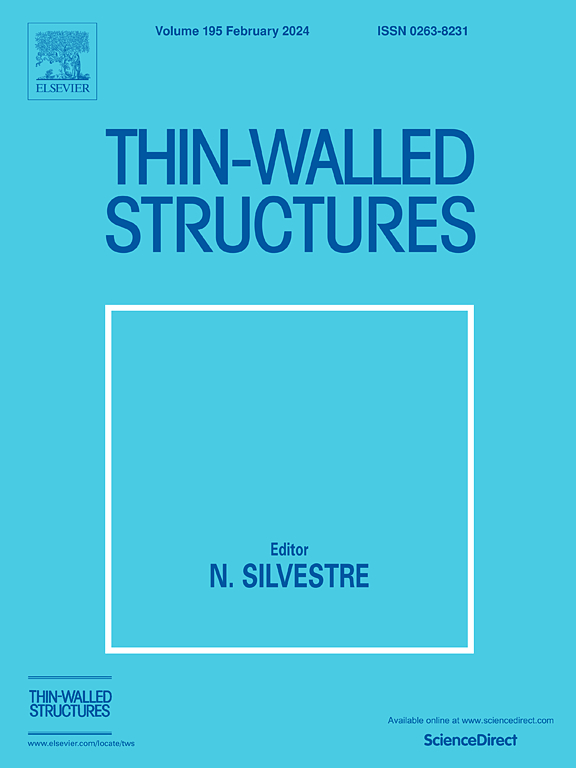Experimental testing and plastic strain analysis of high strength steel longitudinal plate to tubular X joints
IF 5.7
1区 工程技术
Q1 ENGINEERING, CIVIL
引用次数: 0
Abstract
Applying high strength steels to tubular joints can increase the propensity to fracture failure due to their lower ductility. However, to simulate the fracture behavior in the finite element (FE) analysis, sophisticated material damage model with rigorous fracture criteria should be incorporated. Recently, the latest draft of ISO 14346 has advocated the use of 5 % strain limit in FE analysis of tubular joints. The strain limit concept has been further developed by the authors’ previous work, for its use as a practical alternative to the complicated material damage model. Specifically, a lowered limit of 2.5 % was recommended for longitudinal plate to circular hollow section (CHS) joints subjected to in-plane bending. This study extends the strain limit investigation to longitudinal plate to tubular X joints subjected to tensile loads. An experimental program is first presented which included both CHS and rectangular hollow section (RHS) chord members fabricated from two high strength steels with nominal yield stresses of 460 MPa and 700 MPa. Based on test-validated supplemental numerical analyses, it is suggested that the joint load corresponding to 2.5 % strain limit can be taken as the load-bearing capacity to suppress occurrence of a fracture failure for the tubular joint configurations considered in this study.
高强度钢纵向板与管 X 接头的实验测试和塑性应变分析
由于高强度钢的延展性较低,将其应用于管状接头会增加断裂失效的可能性。不过,要在有限元(FE)分析中模拟断裂行为,应采用具有严格断裂标准的复杂材料损伤模型。最近,ISO 14346 的最新草案提倡在管状接头的有限元分析中使用 5 % 的应变极限。作者在之前的工作中进一步发展了应变极限概念,将其作为复杂材料损伤模型的实用替代方案。具体而言,对于纵向板与圆形空心截面 (CHS) 接头的平面弯曲,建议采用 2.5 % 的下限。本研究将应变极限研究扩展到承受拉伸载荷的纵向板与管状 X 接头。首先介绍的实验项目包括由两种高强度钢材制成的 CHS 和矩形空心截面 (RHS) 弦杆构件,其名义屈服应力分别为 460 兆帕和 700 兆帕。根据经过试验验证的补充数值分析结果,本研究中考虑的管状连接构型可将与 2.5% 应变极限相对应的连接荷载作为抑制断裂失效发生的承载能力。
本文章由计算机程序翻译,如有差异,请以英文原文为准。
求助全文
约1分钟内获得全文
求助全文
来源期刊

Thin-Walled Structures
工程技术-工程:土木
CiteScore
9.60
自引率
20.30%
发文量
801
审稿时长
66 days
期刊介绍:
Thin-walled structures comprises an important and growing proportion of engineering construction with areas of application becoming increasingly diverse, ranging from aircraft, bridges, ships and oil rigs to storage vessels, industrial buildings and warehouses.
Many factors, including cost and weight economy, new materials and processes and the growth of powerful methods of analysis have contributed to this growth, and led to the need for a journal which concentrates specifically on structures in which problems arise due to the thinness of the walls. This field includes cold– formed sections, plate and shell structures, reinforced plastics structures and aluminium structures, and is of importance in many branches of engineering.
The primary criterion for consideration of papers in Thin–Walled Structures is that they must be concerned with thin–walled structures or the basic problems inherent in thin–walled structures. Provided this criterion is satisfied no restriction is placed on the type of construction, material or field of application. Papers on theory, experiment, design, etc., are published and it is expected that many papers will contain aspects of all three.
 求助内容:
求助内容: 应助结果提醒方式:
应助结果提醒方式:


